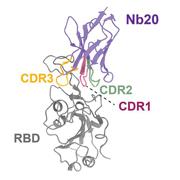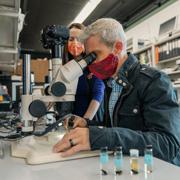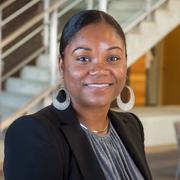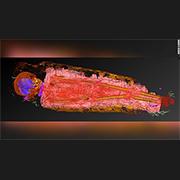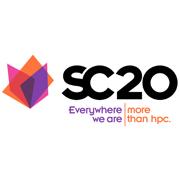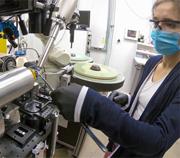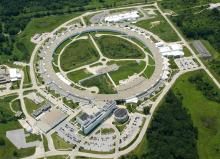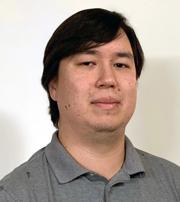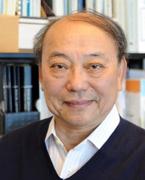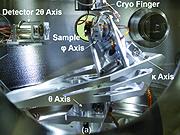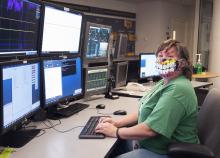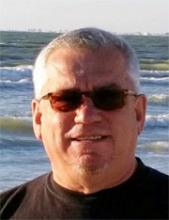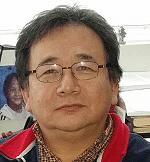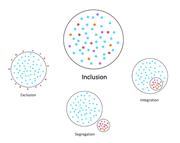
The Advanced Photon Source
a U.S. Department of Energy Office of Science User Facility
News Feed - APS/User News
The APS has been a powerful tool in the battle against the novel coronavirus, contributing more information about the structure of the virus to the International Protein Databank than any other light source in the United States. The 100th structure (pictured) was determined at the National Institute of General Medical Sciences and National Cancer Institute structural biology facility 23-ID x-ray beamline at the U.S. Department of Energy's APS.
Two researchers from Virginia Tech, using the U.S. Department of Energy’s Advanced Photon Source and the Virginia Tech Nanoscale Characterization and Fabrication Lab, are seeking answers to questions about insects’ breathing, which may lead to new applications in microfluidics.
People of the APS Upgrade: This series of profiles focuses on the people behind the APS Upgrade. First up: Deputy Project Manager Elmie Peoples-Evans.
Scientists have pioneered a new technique that allows them to investigate the insides of a 1,900-year-old mummy -- without having to open up and tamper with the ancient artifact. Researchers used a new combination of CT (computed tomography) technology and X-ray diffraction to reveal clues about a Roman-era Egyptian mummy, which was discovered in Hawara, Egypt.
An innovative collaboration between computer and computational scientists from the Data Science and Learning Division and Advanced Photon Source at Argonne, and the Electrical and Computer Engineering department at the University of Illinois at Urbana-Champaign has garnered the Best Paper Award at the SC20 virtual conference.
In 1995, the U.S. Department of Energy’s Advanced Photon Source (APS) at Argonne National Laboratory observed the 100th anniversary of Wilhelm Conrad Röntgen's seminal discovery of the x-ray by producing first light from the APS x-ray source, and by holding an informal ceremony, “20 Years of Light at the APS.” Now, 2020 marks the 125th anniversary of the discovery of the x-ray (and the 175th birthday of Röntgen).
Argonne scientists, working at the Advanced Photon Source as part of a national consortium of structural genomics experts, have greatly increased our knowledge of the virus that causes COVID-19.
Research teams from across the United States are making use of the Advanced Photon Source’s remote access capabilities to better understand the virus that causes COVID-19, and to move forward on treatments and vaccines to combat it.
Michael J. Wojcik, a physicist with the X-ray Science Division Optics Group at the U.S. Department of Energy’s Advanced Photon Source, is a co-winner of a 2020 R&D 100 Award for the X-ray Polarizing Beam Splitter.
Deming Shu, Senior Engineer for High Precision Instrumentation in the X-ray Science Division at the U.S. Department of Energy’s Advanced Photon Source has been named an Argonne Distinguished Fellow upon unanimous recommendation by the Argonne Laboratory Director’s Oversight Council for Hiring and Promotions.
An ultra-high vacuum, non-magnetic kappa geometry diffractometer has been designed and commissioned for the resonant soft x-ray scattering branch of the X-ray Science Division Intermediate Energy X-ray beamline 29-ID at the Advanced Photon Source. There were three main design goals for this diffractometer: kappa geometry, non-magnetic, and high-precision.
Someone has to drive this machine, especially when it’s travelling at nearly the speed of light. Meet (most of) the Main Control Room operators who are part of the Accelerator Systems Division in the Advanced Photon Source at the U.S. Department of Energy’s Argonne National Laboratory.
Argonne National Laboratory researchers, including seven Advanced Photon Source scientists, are recipients of U.S. Department of Energy funding awards for research and development in artificial intelligence and machine learning methods to handle data and operations at DOE scientific user facilities.

Two members of the Advanced Photon Source/Photon Sciences Directorate, and the daughter of another Photon Sciences staffer, were among the more than 70 Argonne National Laboratory community members who were honored at a virtual awards ceremony hosted by the UChicago Argonne Board of Governors on Wednesday, September 16, 2020.
Exoplanets, or planets outside of our solar system, that contain more carbon than Earth could be made out of diamonds, according to a new study based on research at the U.S. Department of Energy's Advanced Photon Source at Argonne National Laboratory.
Thomas Anthony Padilla, Tom to his countless friends and colleagues, passed away on August 27, 2020.
We note the passing of Andre McKenzie on July 11, 2020. Andre was a valuable and valued member of the Argonne National Laboratory and Advanced Photon Source families for many years.

The White House Office of Science and Technology Policy, the National Science Foundation (NSF), and the U.S. Department of Energy (DOE) announced over $1 billion in awards for the establishment of 12 new artificial intelligence (AI) and quantum information science (QIS) research institutes nationwide.
The $1 billion will go towards NSF-led AI Research Institutes and DOE QIS Research Centers over five years, establishing 12 multi-disciplinary and multi-institutional national hubs for research and workforce development in these critical emerging technologies. Together, the institutes will spur cutting edge innovation, support regional economic growth, and advance American leadership in these critical industries of the future. Led by the U.S. Department of Energy’s (DOE) Argonne National Laboratory, Q-NEXT is one of the five Quantum Information Science Research Centers to be established by DOE.
Yu-Sheng Chen, a research professor at the University of Chicago and Operations Manager for the ChemMatCARS Sector 15 x-ray beamllnes at the U.S. Department of Energy’s Advanced Photon Source (APS) has been named the recipient of the 2020 DECTRIS Award sponsored by the DECTRIS detector manufacturer for studies of metal-organic frameworks carried out at ChemMatCARS. The awarded work was published in the journal Nature Chemistry and highlighted on the APS web site.
APS Director Stephen Streiffer and the Photon Sciences Directorate Diversity and Inclusion Council strongly encouraged staff and beamline personnel to take advantage of the latest Argonne initiative on diversity, equity, and inclusion. In the workshop, “Equity-mindedness: Identifying and Interrupting Implicit Bias through Candid Conversations,” participants learn more about their own socialization and social identities along with the conscious and unconscious prejudices and bias they may hold. Furthermore, they learn to identify and challenge unexamined beliefs about self and others and understand how these beliefs have contributed to inequity.
